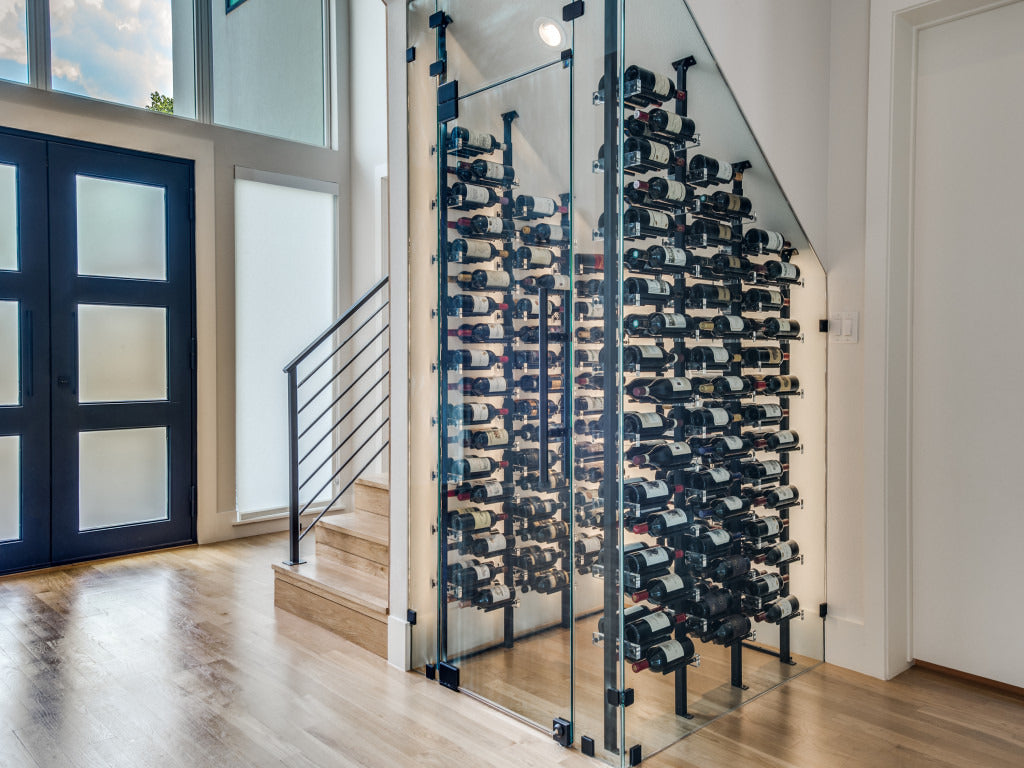Modern design and clever construction have made it possible to transform residential and commercial spaces into tasteful wine rooms, wine walls, and wine caves. Limited square footage dedicated to smaller collections are no exception. In fact, with knowledge, experienced support, and the right cooling technology, a small wine storage vision can become a reality in your home or place of business.

Calculate Wine Storage Potential
A terrific first step when contemplating the right cooling system to store and age wine is using Wine Guardian’s wine cellar cooling calculator, which offers recommendations for small wine cellar solutions depending upon your requirements. The calculator’s “advanced mode” is appropriate when more in-depth design and construction parameters have been set.
It is important not to select a wine cellar cooling unit that has too much capacity for a small wine cellar. A unit that is too powerful may cool the area too quickly to dehumidify the air properly. The air will hold more moisture than it should and can affect the ideal humidity for wine storage, which should hold steady between 50-70%. Too much humidity causes mold and glue on labels to break down.
Small wine cellar cooling units should be engineered to maintain ideal conditions according to your specifications and the type of wine being stored. Wine Guardian units cycle on and off, operating only a few minutes per hour — or as needed — to maintain precise temperatures and humidity levels.
Choose the Right Small Wine Cellar Equipment
Since space is typically limited in smaller wine storage rooms, it stands to reason that appropriate equipment has features designed specifically to work within these structures. There are several well-suited units perfect for a small wine cellar.
Types of Small Wine Cellar Cooling Units
Through the Wall
Through-the-wall wine cellar cooling units come in two capacities up to a maximum capacity of 2,100 BTUs/hour (455 watts). The mechanicals are housed within the compact unit and exhaust heat into an adjacent, internal area.
Small wine storage options can be particularly appealing to those eager to install a system without the support of a contractor. Through-the-wall units can be installed flush to the wall for an unobtrusive look within an elegant wine room or cabinet and are surprisingly quiet to run. The temperature gauge is easy to adjust and shares a panel with the temperature and humidity displays, making it simple for the owner to maintain pristine conditions for their wine collection.
Ceiling Mounted
Ceiling-mounted wine cooling units – including the Wine Wall Cooling System – are also quiet options well-suited to displays and smaller all-glass wine rooms. These split wine conditioning units were designed for ceiling mounting and fit well between standard joist construction. The wine cooling systems are configured with capacities of up to 4,300 BTUs/hour.
Ductless Split
Wine room cooling units that have two separate sections, but that require ductwork are commonly called ducted split wine cellar cooling units. Split systems are often considered to be the quietest systems. They are virtually vibration-free, making them ideal for cellars with too little nearby space to house a self-contained wine cooling unit.
Ductless split wine cellar refrigeration systems provide a maximum cooling capacity of 2,800 BTUs/hour and are perfect for wine rooms lacking the space to accommodate ductwork or venting. These conditioning units can be surface mounted or mounted through the wall to save maximum space, and they provide the flexibility of a split system. Envision a compact fan coil that fits well within a racking system or above a doorway, with a sleek condensing unit that also comes in a small footprint and mounts to a variety of structures.
Ducted Split
Ducted wine cellar cooling units that are split are commonly known as the quietest system and are virtually vibration-free, making them ideal for cellars with too little space to house self-contained wine cooling units. Smaller wine cellar air conditioners have a maximum capacity of 3,400 BTUs/hour and have several accessories to meet the needs of the application, including an electric heater option.
Find a Distributor
While you may be able to purchase some products directly on this website, others require that you use a distributor. A proper wine cellar cooling unit distributor will have plenty of options for you to consider for your project and will provide you with the right information to help guide your small wine cellar ideas. A few recommendations for Wine Guardian distributors include these wine cellar design/build companies:
Final Thoughts
With the best wine cellar refrigeration unit, anyone can maintain exceptional climate control conditions for their small wine storage spaces, often on par with those found in larger, more elaborate wine cellars. Whether you prefer to install a system on your own or wish to work with an engineer or contractor, Wine Guardian products are designed with you and your collection in mind.

